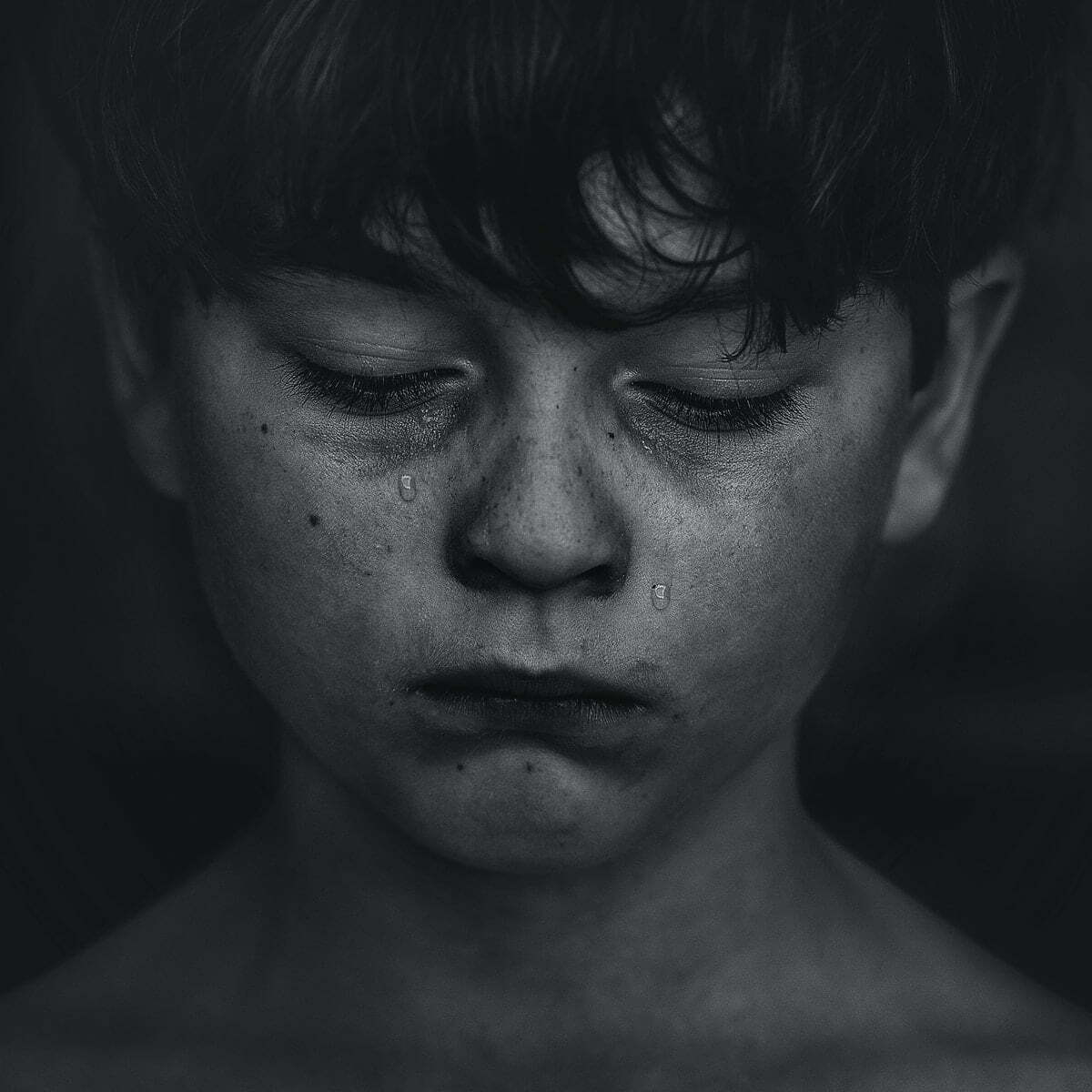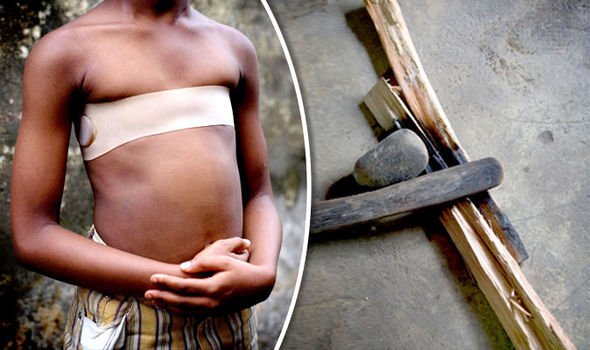Cyber bullying and online sexual exploitation are not the only dangers that lurk on the world wide web for children. Here we look at some of the other safeguarding risks that young people may be exposed to, including radicalisation, criminal exploitation and exposure to violent media.
Exposure to pornographic material and violent media.
There is no doubt that many children are over exposed to sexual and violent material. Television, video games, music, movies, advertisements, magazines are just some of the platforms that allow young people to access inappropriate information and imagery. Online content is increasingly the easiest method for children to access information. It is their preferred medium and therefore poses a huge risk to parents, carers and safeguarding professionals. To any child with unsupervised access to the internet, it provides the potential to access almost limitless images portraying uncensored violent and sexually explicit content. Exposure is also occurring at an increasingly younger age with some children as young as 5 years being proficient in surfing the web.
Pornographic Material – Research shows that young people who are exposed to media glamourising, sex, violence, drink and drugs, are more likely to engage in those behaviours themselves. Exposure to sexual content leads to increased chances of underage and potentially high-risk sex such as:
- unprotected sex
- multiple sexual partners
- harmful and violent sex
Accessing pornographic material for any child that has an internet enabled device, takes but a handful of taps. According to the NSPCC and estimated 1 in 5 children aged between 11 and 16 have accessed an adult site. Such is the volume of available free internet pornography; the government plans to introduce the Digital Economy Act 2017 which proposes an age-verification system for websites that contain pornographic content. The act will give the British Board of Film Classification (BBFC) powers to make internet service providers restrict access to those pornographic sites, that do not have robust age verification systems in place.
This piece of legislation was due to be enacted this month (May 2018) but there have been several issues with its introduction. Critics say the legislation has been ill-thought out and is unworkable. One of the main sticking points is that it would force adults to register and provide porn sites with their personal details. This hasn’t gone down to well and has led to a debate about censorship and over-regulation. Regardless of the moral debate, the legislation only applies to UK based providers and given the majority of porn sites are USA based, it is questionable how effective the legislation will be. There is also the fact that most social media sites have a minimum age restriction to join, but most are easily circumnavigated by young people who have the will and inclination to use the sites. The chances that they would do the same with porn age verification is high. These are just some of the issues and at the time we write this piece, the legislation has stalled.
Regardless of whether a child intentionally try to access porn, there is always the likelihood that children will ‘accidnetially’ be exposed to inappropriate pornographic material. In January this year Google was forced to remove 60 apps from its Play Store after many featured pornographic adverts targeting children. The apps had been infected with malicious code called “AdultSwine”.
Violent Media – Over the last decade there has been much research into the effects on young people to being exposed to violent media. Most Psychologists agree that prolonged exposure to violent media can be harmful, leading to increased aggression, poor social skills and limiting empathy for others. Violent media can include scenes of:
- torture
- genocide
- images of war
- rape and sexual violence
- cruelty to animals
- domestic violence
- gang violence
In July 2017 warnings were issued about online offenders targeting the hugely popular children’s show Peppa Pig. In the US and online, this doctoring of children’s videos became known as ‘Elsagate’, named after Elsa, the character in Disney’s 2013 ‘Frozen’ movie. Elsagate refers to family and child orientated videos on YouTube and YouTube Kids featuring children’s characters altered to contain violent, sexual or other adult themes. Perpetrators created and placed online episodes of the popular shows, editing the storyline and inserting inappropriate content. In Peppa’s case this included showing her involved in knife attacks, abductions and being savaged in a forest by wild animals. The episodes are cleverly disguised to closely resemble the real artwork of the official show. They were easily available by searching Google. As well as Elsa and Peppa Pig, other shows included Spiderman and Paw Patrol.
Our Comment: Whilst most Psychologists agree that prolonged exposure to both violent media and extreme pornography can be harmful, opinion is often divided as to whether this then leads a person to commit violent or sexual acts. Earlier this year mental health experts from the American Academy of Paediatrics warned that fear-inducing videos could affect the development of the brain in young children. They said that repeatedly viewing inappropriate content can have an adverse effect on the developing brain. Our view is that there are enough tragic cases that can be cited as examples to suggest that in some individuals, habitual exposure to violence and extreme pornography fuels them into acting out what they see on the screen. Regardless of whether they go on to commit criminal offences, early exposure to pornography and violence in children will have a significant impact on a child’s attitudes and outlook towards forming friendships and sexual relationships. It may also have a significant effect on their future mental wellbeing.
Case Study – Call of Duty
In 2014, Coroner John Pollard questioned the role that the video game ‘Call of Duty’ may have played in the deaths of four young men. At the time Call of Duty was one of the most popular game franchises globally. A violent and bloody 18+ shoot to kill game where the emphasis is on how much death toll you can rack up. The Coroner stated that he had identified that prior to the deaths, the deceased boys had been players of the game, and in three of the cases the game activity had been close to the time of death. He made these comments whilst presiding over the inquest of 16-year old William Menzies who had been discovered in his bedroom, having died from asphyxiation. Whilst he didn’t reveal all the cases , he referred to the 2012 inquest of 14-year old Callum Green who had been discovered hanging at his home. In William’s case , the Coroner recorded a verdict of suicide, whereas in Callum’s case , he recorded an open verdict. Whilst it could not be proved that any of these tragic deaths were directly attributable to the video game, the Coroner raised a much-debated question – exactly what impact does watching and playing violent video games have on young minds?
If anyone is in any doubt whether they do have an impact, then look no further than the Norwegian mass murderer Anders Behring Breivik, who in 2011 killed 77 people in a gun and bomb attack. On 22nd July, Breivik detonated a bomb concealed in a van in the government area of Oslo , killing eight people. He then went to the island of Utøya located in the Tyrifjorden lake approximately 20 km drive from Oslo, where he went on a killing spree, shooting dead another 69 people. Most of the dead were young people, for the island was used as a camp site by the Worker's Youth League, the youth movement affiliated to Norway’s Labour Party. His youngest victim was 14 years old. During the investigation and at his trial it emerged that he had trained for the attack by practicing his aim, using the holographic sights available in Call of Duty. Whilst Breivik was an adult and never played the game as a child, it was clear that he used the game to practice his killing.
Extremist ideology on the Internet
Online radicalisation is a huge and worrying issue for the government, law enforcement agencies and the security services. Terrorist and extremist organisations have long since recognised the power of the internet to preach their ideology and use it as a tool for recruitment and radicalisation. For safeguarding professionals, this area presents great challenges around how we identify young people are at risk of radicalisation and the actions we take to divert them away from the dangers.
The Serious Case Review (SCR) into the deaths of Abdullah and Jaffar Deghayes in July 2017 questioned the actions of police and social care with the inevitable criticism in the national media following. Both Abdullah, 18 years and his brother Jaffar, 17 years, had followed an older brother on a Jihad to Syria, where they died fighting for a faction affiliated to al-Qaida. The SCR suggested that the police and social care had failed to spot that the brothers were being radicalised, despite the family being known to the authorities for several years. The report stated that clear opportunities were missed to spot their growing vulnerability to Jihadist exploitation.
In 2012 Jaffar had been arrested after making threats to kill a shopkeeper during which he made extremist comments. Other concerns about potential anti-Semitic and American views held by the brothers came from other sources, a school and youth worker. The family had mainly come to notice to police and social care through domestic abuse allegations within the family. On one occasions two of the boys had also made a complaint about being forced to wake at 4.30am by their father to study the Qur’an. They said they were punished and beaten if they didn’t study properly.
The family, who lived in Brighton, also suffered racist abuse and harassment from the surrounding community. The boys were bullied at school and branded “terrorists”. This abuse escalated into serious racial incidents when their Uncle returned to the areas after his release from Guantánamo Bay, having been incarcerated there for 5 years, following his arrest in Pakistan. This made it extremely difficult for social workers, who reported that the family were increasingly uncooperative and that intervention strategies were ineffective. In effect, the children within the family who already placed under a strict and harsh regime by their father, were further isolated and alienated by the community around them. Their older brother Amer became more and more radicalised and exerted his influence over his brothers. Amer opened a gym which became a front for radicalising young people. Eventually Amer left the UK to take up Jihad and was shortly followed by his younger brothers Abdullah and Jaffar. The SCR identified 13 failings including:
- Police, youth and social workers and counter-terrorism officers failed to share vital information.
- Agencies failed to recognise the brothers were being radicalised.
- Agencies failed to understand the impact that religion had in their lives.
- An “atmosphere of suspicion” between counter-terror police and other agencies.
- Brighton and Hove Social Services had insufficient knowledge and understanding of minority ethnic and faith communities.
- Agencies failed to take proper action when extremist action was displayed.
The SCR did acknowledge that “at the time there was little local or national knowledge or understanding of the risks to children from being exploited into radicalisation to go and fight in wars elsewhere in the world”.
Whilst awareness amongst safeguarding professionals has undoubtedly improved, what makes our job much more difficult is the ability of extremists to reach out and influence young people through the use of social media and the internet. The power of the internet on vulnerable young people cannot be underestimated. The internet makes extremist ideology widely accessible to young people. Social media sites, chatrooms, forums, instant messaging are used relentlessly by extremists not only to communicate between themselves, but also to identify and approach vulnerable people who may be more susceptible to their ideology.
In the wake of the terrorist attacks in Manchester and London in 2017 the government acknowledged the issue with the Prime Minister warning internet companies to do more to limit the spread of extremist material and “eradicate safe spaces for extremism”. This has given the impression that little is being done to combat online extremist material. This is misleading as law enforcement agencies are very active in removing material and taking down extremist websites. The Counter Terrorism Internet Referral Unit (CTIRU) removes from the web approximately 2,000 unlawful items per week. The public can report material they believe to be extremist related via and online reporting system found at www.gov.uk/report-terrorism.
Online Gaming
Many video games are now played online with children connecting directly to other players over the web. If a child is connected, even through a game, then they are vulnerable to online offenders. Roblox, a virtual reality game aimed at young people between the ages of 8 and 13 allows young people to immerse themselves in character and tour 3d environments, be contacted and meet other characters (controlled by others) all within the game. Children are able see other characters who can be naked and carry out inappropriate acts. Each user can have up to 200 friends. It is just one example of a game where this virtual world is used by predators to groom children.
Breck was a 14-year-old boy who lived in Surrey. He attended St Bede's School in Redhill, was a member of the Air Training Corps and attended church with his family on a regular basis. He was a personable boy who had many friends. He was also an avid computer user and online game player within a small group of friends. In 2013 Breck’s personality and views began to change. He became increasingly isolated from his family and more and more interested in being online. Breck’s circle of gaming friends had a new member, an 18-year old male called Lewis Daynes. Over a period of several months Daynes began to influence the group, particularly Breck. One of the methods he used was an internet chat room where he dominated and controlled members. He fabricated a fictitious persona claiming that he was a computer engineer running a multimillion pound company and that he also worked for the US government, regularly travelling to the Middle East. Members were promised false jobs and wealth in the computer technology world.
Breck’s mother Lorin became suspicious and made many attempts to prevent contact between her son and Daynes. Lorin contacted the police raising concerns that her son was being groomed online. However, her fears were not dealt with properly and the police failed to carry out a check on Daynes details on the Police National Computer. Had they done so it would have revealed that Lorin’s concerns were well founded. Lewis Daynes had a troubled past and in 2011 had been accused of raping a boy and possessing indecent images. Although not charged with these offences, the fact that he was now gaming online with young boys, should have raised concerns with the police. Lorin did the only thing left to her and confiscated Breck’s computer equipment. Daynes, realising that he had been discovered and had limited time, secretly sent Breck a mobile phone by courier. He began to make false promises about his fictitious company and how he wanted Breck to take it over. On this pretence he asked Breck to visit him in his flat in Essex.
Lorin and Breck’s father had separated and on Sunday 16th February 2014 Breck was supposed to visit and spend the half term week with his father. He didn’t arrive, for he had travelled from his home in Surrey to Daynes flat in Grays, Essex. At some point after arriving at the flat Daynes murdered Breck by cutting his throat, then photographed his body and sent images to other members of the gaming group. Daynes also calmly called 999 claiming that he and Breck had got into an altercation stating, “and I’m the only one who came out alive”. Whist police were contacting Breck’s parents to inform them of his death, his friends had already began to message his siblings asking them whether it was true that Breck was dead. Daynes pleaded guilty and was sentenced to life imprisonment with a minimum term of 25 years.
Our Comment: We have both had the privilege of hearing Breck’s mother Lorin LaFave speak passionately about her son and the events leading up to his murder, and the tough times that followed. Lorin has founded The Breck Foundation in Breck’s memory to raise awareness of online dangers and promote responsible use of the Internet. We heard Lorin speak at London Safeguarding CSE conference and both of us agree that we have never heard a more courageous and passionate speaker than Lorin. We can’t do Lorin and Breck’s story justice in the short case summary above. We can say however, that is was only by hearing Lorin talk about her experiences, the changes in her son and the influence Daynes had over him, that we came to fully appreciate the dangers of online gaming and grooming. The foundation provides training and presentations for school children on web safety. The Metropolitan Police Service have trained many of their Cadets and Schools Officer’s to deliver the Foundation’s message within London schools. We highly recommend professionals that you take a look at The Breck Foundation website which can be found at http://www.breckfoundation.org
Social Media Games
Social media games are rare but when they do surface they can spread quickly from country to country and some may present a real danger towards vulnerable young people. Examples of dangerous social media games have been:
The Blue Whale Challenge – an anonymous ‘master’ challenges people to complete a series of tasks over 50 days, ending in the person taking their own life. The tasks are initially simple but quickly become increasingly dangerous. The game apparently originated in Russia and there have been unconfirmed reports that it was linked to the deaths of two teenage girls.
Game 72 – a young person is dared by their friends to go missing and disappear completely for 72 hours, basically fall off the face of the earth. The game was said to have originated on Facebook.
There is no evidence that The Blue Whale Game and Game 72 actually existed, and both are likely to have been hoax’s circulated by rumour across the web. Both games, had they been true, pose significant risk challenges for safeguarding professions. Whilst many games may be false, there are several that are not. One confirmed game was the ‘Eraser Challenge’ where children were encouraged to use erasers to rub away the skin on their arms, often while reciting the alphabet or other phrases. Players compare the resulting injuries, and the most injured player is the ‘winner’. The implications for this game are obvious – physical burn injuries which may lead to serious health issue if they become infected.
Another recent and very real game was the ‘Ikea 24 Hour Challenge’, which involved encouraging people to hide in large shops and warehouses overnight and then the following morning, sneak out undetected. This one was named after Ikea after that store was targeted in various countries with ‘players’ hiding in wardrobes. Ikea were adamant that if anyone was discovered in their stores overnight , they would pursue a prosecution. Many other games target vulnerable children, encouraging them to carry out acts such as bullying others, self-harm, commit dangerous dares or follow a particular dangerous regime or trend, e.g. encouraging eating disorders.
Online Entrapment
There will be occasions where an online predator’s motivation won’t be sexual exploitation or grooming, but will be even more sinister in nature. Predators can target and identify a young person for very serious crimes e.g. rape and even murder.
Online Stalking
Young people can become the victims of cyberstalking. Suspects can be strangers, people they know or an ex-boy/girlfriend. A clever and proficient cyberstalker can harass and stalk a person just as easily as if they were physically stalking the victim in person. They can take over a victim’s account, steal personal and financial information, pry into a person’s private life, create false profiles, spread malicious gossip, discredit a victim on social media and send threats.
Identity Theft
Often associated with adults and rarely seen as an issue for young people. However, children are also highly likely to become victims of identity theft. It is often beneficial for offenders to target young people about to enter adulthood, purely because their credit history is healthy.
Targeted Online Marketing
In March this year Facebook came under the spotlight after it was revealed that data held by the company on 50 million people had been improperly accessed by the political consultancy company, Cambridge Analytica. They had allegedly used the information specifically to target voters to influence the 2016 US presidential election. This led to numerous other media stories concerning how much personal data social media platforms hold on their users, how they store that information and who they share it with. Recently in the US, Facebook, Google and YouTube have been criticised for collecting data from children aged under 13 by using their browsing habits and then targeting them with advertising, all without their parents’ knowledge or consent. The introduction of the General Data Protection Regulation (GDPR) will tighten up the rules around data, and for social media companies it should mean that if they want to track and use a customer’s data for advertising, they must state what data will be collected, how it will be used and obtain explicit opt-in consent. However, it is unlikely that when a child signs up to a social media platform, they care about the privacy information within the terms & conditions. The bottom line is that if a child puts their private life out there on social media, then there is a fair chance it will be sold on to other commercial companies who will use it to target and manipulate them commercially.
Criminal exploitation
The use of the internet by criminal networks (County Lines) and gangs to recruit and exploit young people is a growing trend. Children as young as 11 are being recruited with the most common age being 15 -16. Whilst most initial contact is carried out on the street and in schools, gangs and organised crime groups are increasingly using social media to entice young people in. Many street gangs are using social networking sites to promote and showcase their image, whilst individuals use it to display their gang affiliation and mock rival gangs. Increasingly gang fights are being filmed and posted online. In the USA law enforcement agencies have coined the term ‘cyber gang-banging’ for this recent development. Whilst there is no direct evidence of recruitment through the internet, it is the promotion of gang culture that makes that lifestyle attractive to young people and therefore poses a challenger to us as safeguarding professionals.
In the UK the use of social media by gangs has been highlighted by the increase in knife related violence and the murder in London in the first part of 2018. Several prominent people, including the Commissioner of the Metropolitan Police, Cressida Dick, have suggested that violent imagery being shared online amongst young people is fuelling gang related violence. One news article described how YouTube, Snapchat and other platforms are used by gangs to celebrate and brag about shootings and stabbings, shame police witnesses, escalate feuds and feature acts of violence. Most media platforms claim they have policies that adopt a zero-tolerance approach towards videos that feature and glamourise gang related violence. However, this does not prevent hundreds of videos being in circulation, and the media platforms making money by attaching legitimate advertising to them.
Suicide and Self-Harm Websites
It is not difficult to type in the word ‘suicide’ into a search engine and find professionally created pro-suicide websites, with instructions on how to take your own life. These can include sites where other people actively promote and encourage visitors to the site to take their own life. If you bear in mind that if a person visits a site like this, they are already in a very bad place. Any active encouragement by other likeminded or manipulative people, is likely to have a significant and potentially tragic impact. In many cases the influence of these websites is only revealed where a family or police find details of the websites on the digital device of the deceased.
Illegal Prescription Drugs Online
Another emerging safeguarding issue is the availability of prescription drugs that are now being marketed and sold online. These are being sold illegally to young people through social media. In February this year, a BBC investigation reported that the prescription drug Xanax was being sold illegally to children on social media sites. Xanax (Alprazolam) is a minor tranquiliser used to treat anxiety and must be prescribed by a medical professional in the UK. However, it is widely used and available in the US and is seen by many young people as a recreational drug. It has a number of potential side effects and is highly addictive. Medical experts warn that overdoses can be fatal particularly when mixed with alcohol and other drugs. The BBC quoted the charity Addaction who said that children as young as 13 had bought it online. The BBC identified adverts for the drug on social media platforms Instagram and Facebook. This is not an isolated incident, nor is this the only drug that can be obtained via the web. Other drugs include Valium , Viagra, Fentanyl, Pregabalin, Oxycontin, Norco, and Anabolic Steroids.
In November 2017, the rapper Lil Peep (real name Gustav Åhr) was found dead in his tour bus whilst touring in Tucson Arizona. The 21-year old emo artist was due to give a concert following the release of his debut album. He had gained popularity through posting his music on YouTube, where he amassed millions of hits. His fame was further enhanced by expressing his personal life through social media, talking frankly about his sexuality, relationships and his battle with depression. He used Twitter to come out as bisexual in the summer of 2017. He also regularly put out posts referencing drug use , including the use of cocaine, ecstasy and Xanax, advising people to stay away from drugs. It is reported that a few hours before his death he sent out several posts on Instagram claiming he had taken a cocktail of Magic Mushrooms and Cannabis, and also six Xanax pills. It was also reported that his death was livestreamed onto Snapchat after a friend thought that he was sleeping, although this has since been disputed by the friend and described as a sick fake story, with previous footage of Lil Peep sleeping , being used in the offensive post.
The subsequent investigation by the police and the County Medical officer concluded that 21 -year old Lil Peep had died of an accidental overdose of Xanax mixed with the powerful synthetic painkiller Fentanyl. It was reported that he also had a mixture of other drugs in his system, including, cannabis, cocaine and other multiple powerful opiates.
Whilst the death of Lil Peep does not relate to obtaining Xanax or any other drugs via social media, we felt that it demonstrated the power of social media in other ways. Lil Peep success came from his online presence, his use of social media to promote his music and to open up about his personal life, drug use and even document the drug use in the hours before his death. Whilst he may well have told his followers to avoid the use of drugs, it could be argued that his hypocritical posts featuring his own drug use, as a high profile online media presence, negated any good he felt he was doing by being open and honest. He apparently had over 2 million followers , many of whom would have been impressionable young people.
This article is not intended to deter parents, carers and safeguarding professionals from allowing children and young people to go online. The internet is a powerful tool that used wisely , can educate and help develop children and young people’s skills and opportunities. The key to allowing children to use the internet safely, is equipping yourself with the knowledge about the potential dangers that they may face. Only by knowing the safeguarding issues , can we begin to put in place the measures to reduce the risk.
Thanks for reading

Get Involved!
Share Your own Safeguarding News and Research to reach a wider Audience
From Our Blog
Police Protection – A practical guide
Each year across the UK, hundreds of children are removed from harmful situations by the police and placed into ‘Police Protection’. We take a look at this valuable tool, which if used responsibly, can be a very valuable tool in safeguarding vulnerable children.
Sextortion – Guide and Resources
Sextortion – a guide and links to useful resources.
Dementia -The Herbert Protocol
We take a look at The Herbert Protocol, a simple risk reduction tool to be used in the event that an adult with care and support is reported missing. It is widely associated with people living with dementia who go missing, providing police with vital information to enhance the chances of locating a person quickly and safely.
Child Abduction Warning Notices (CAWN’s)
Many missing children are harboured by adults when missing. We take a look at Child Abduction Warning Notices (CAWNS), what they are used for, the processes involved and the law if they are breached.
Related Posts
The Safeguarding Hub
Share Your Safeguarding News And Research To Reach A Wider Audience







